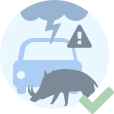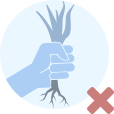
Acude a nuestros centros de visitantes, puntos de información y ecomuseos para sacarle el máximo partido a tu visita.
Las marismas del Guadalquivir han sido históricamente un espacio de extremos, seco e inhóspito en verano pero sometido a intensas inundaciones durante el periodo de lluvias. Durante siglos ha constituido un lugar a evitar por los humanos pero también uno de los principales refugios de biodiversidad de Europa, que encontraba su máxima expresión en el grupo de las aves acuáticas.
La “domesticación” de este vasto territorio, su transformación para la agricultura, ha sido un proceso complejo y relativamente reciente que ha supuesto la desaparición de más del 80% de la superficie original ,de la que apenas se ha salvado lo que hoy conocemos como el Espacio Natural de Doñana, principalmente en la margen derecha del río.
En el caso de Trebujena, en la margen izquierda, se produjeron reiterados esfuerzos para desecar las marismas en la segunda mitad del pasado siglo que supusieron el drenaje de hasta 3.100 has. Estos trabajos, sin embargo, fracasaron en gran medida en su intento de poner en producción agrícola los terrenos dado el carácter rentable o directamente inviable su aprovechamiento.
Si queremos tener una idea de como eran las marismas de Trebujena antes de su transformación, podemos mirar las primeras fotografías aéreas de la época que nos cuentan que, todavía durante gran parte del siglo pasado, este espacio aún conservaba un complejo entramado de caños, lucios y vetas, hoy ya casi desaparecido, pero que aún puede adivinarse en años muy lluviosos. En este contexto, la Junta de Andalucía ha recuperado alguno de los antiguos lucios con el objetivo de conservar la biodiversidad de la zona, especialmente mediante la recuperación de una de las principales áreas de nidificación de especies de aves acuáticas como la Cerceta pardilla (Marmaronetta angustirostris), la focha moruna (Fulica cristata) o la malvasía (Oxyura leucocephala).
Estos humedales también ayudarán a recuperar la funcionalidad del estuario del Guadalquivir al funcionar como zonas de refugio y engorde de alevines de las numerosas especies de peces y crustáceos que se desarrollan en el estuario y ayudando a laminar las avenidas que se produzcan en invierno.
El sendero incluye un mirador elevado que facilita la observación de aves (Mirador del lucio de Gabela Honda). También existe otro mirador que puede ser visitado en el colindante lucio de Espinete.






Para acceder a este equipamiento por la carretera vecinal deTrebujena al Guadalquivir, al llegar a la carretera CA-9027, conocida como carretera del páctico, giramos a la izquierda y a unos 2,5 km se encuentra el acceso a este sendero (Las coordenadas ETRS 89/UTM 30s son: X 209553,17 Y 4087740,57). También podemos acceder desde Sanlúcar de Barrameda, por la carretera CA-9027 a Trebujena, después de pasar el caño de Martín Ruiz, a unos 3,25 km se encuentra el inicio del sendero.

Acude a nuestros centros de visitantes, puntos de información y ecomuseos para sacarle el máximo partido a tu visita.

No molestes ni des comida a los animales. Alterarías negativamente su conducta.

Consulta la previsión meteorológica antes de iniciar tu actividad.

Lleva agua, protección solar, ropa y calzado adecuados.

Lleva un móvil con suficiente batería en caso de emergencia (112), pero recuerda que no siempre hay cobertura.

Por tu seguridad y la del entorno, no te salgas del camino señalizado ni tomes atajos.

Extrema la precaución en condiciones adversas y ante la presencia ocasional de animales o vehículos a motor.

Sigue las recomendaciones y cumple la normativa en todo momento

Respeta las instalaciones puestas a tu disposición. Su mantenimiento lo pagamos todos.

Colabora para evitar incendios. No arrojes cigarrillos o cualquier otro objeto que produzca combustión.

La basura no vuelve sola. Llévala contigo hasta el contenedor más próximo. Reduce, reutiliza, recicla.

Evita salir solo. Si lo haces, comunica recorrido y hora de regreso a otras personas.

El ruido es otra forma de contaminación. En silencio disfrutarás más de tu experiencia.

Convive respetuosamente con la gente del lugar y demás usuarios. Respeta los bienes y propiedades privadas.

Facilita el uso a personas con necesidades especiales.

Consumiendo productos locales y contando con empresas de la zona contribuirás al desarrollo rural.

Practica un turismo responsable y comprometido con el entorno. ¡Sé un verdadero ecoturista!

Nunca abandones a tu mascota en la naturaleza. Pondría en peligro la flora y la fauna del lugar.

Desplázate de una manera sostenible: transporte público, bicicleta, a pie, vehículo eléctrico o compartido… Aparca en los lugares habilitados

No dejes huella de tu paso por la naturaleza. El mejor recuerdo que puedes llevarte es tu propia fotografía.

Tu seguridad es nuestra preocupación, pero es tu responsabilidad.

La conservación de los espacios naturales también está en tus manos. ¡Gracias por tu colaboración!